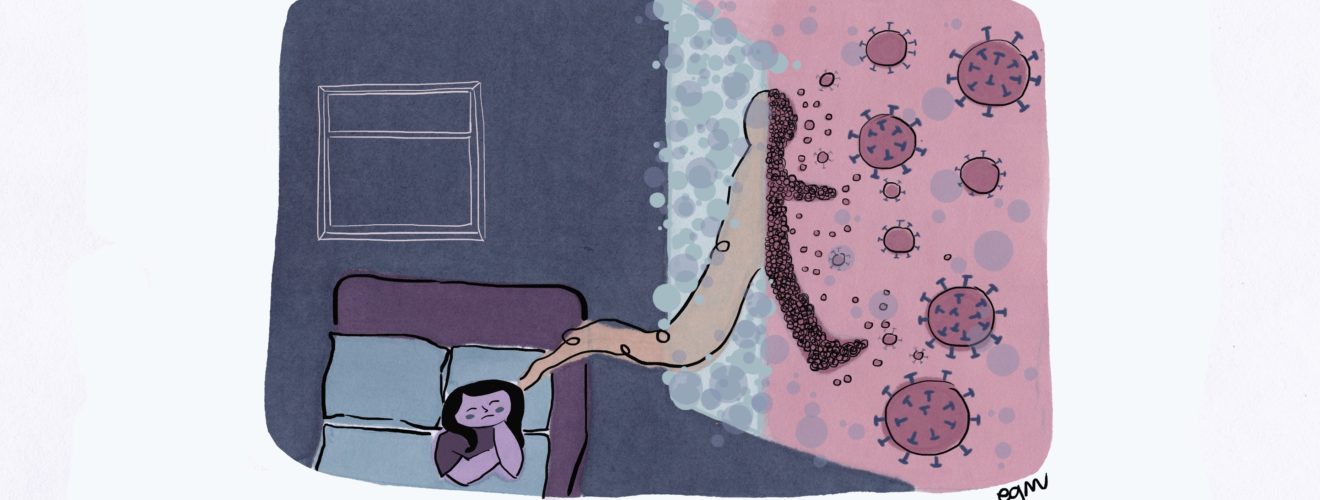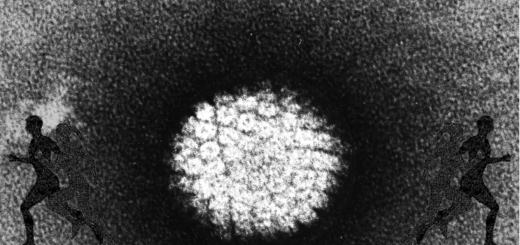Oddly vivid: Memorable dreams during lockdown

Lights out. It’s time to pry yourself away from flashy screens, climb into your bed, and slip under the covers. When our heads hit the pillow each night, we tend to think that we’re surrendering — forfeiting the day’s unanticipated sensations, rattling nerves, and jittery worries to exhaustion. But, that’s not it. We’re also surrendering our minds, our sensory cues of seeing and smelling, and letting our subconscious take over until the alarm starts ringing hours later.
Doctors have warned for years that people are not getting enough sleep, resulting in a surge of health-related consequences ranging from drowsy driving to fatal heart disease and increased risk of dementia1. Between spending time at work, familial and social obligations, squeezing time into our overbooked schedules to sleep and recharge our bodies can be a challenging task.
It’s a common misconception that our bodies “shut down” during deep sleep and that our brains go idle for a while when the lights go out. However, as scientists have found in the past couple of years, this is far from what is actually occurring4. Instead, research indicates that our brains begin working, shifting, and turning gears while we sleep. Such brain activity during sleep time is very different from how our brains function during the day, when we are consciously awake. In fact, our brains are particularly active during one specific sleeping phase: rapid eye movement (REM) sleep.
What is REM Sleep?
Sleep involves five different phases in which the brain and body cycle through different stages. In the first four stages, the body transitions from shallow to deep sleep. Then, in the fifth stage, also known as the REM stage, the brain delves into heightened brain activity and vivid imagery. As Jerome M. Siegle, a sleep expert at the University of California, Los Angeles, notes REM sleep is akin to the “brain shivering”2.
What happens during REM Sleep?
REM sleep activates certain regions of the brain while deactivating others. Specifically, during REM sleep there is heightened activity in the visual and motor regions of the brain, more commonly known as the occipital lobe and motor cortex. On the other hand, there is decreased activity in regions such as the prefrontal cortex, which is associated with logic and reason. Scientists conjecture that this may be the reason why dreams are oftentimes nonsensical and rather bizarre. Since areas like the prefrontal cortex region have been implicated in more complex reasoning and decision making, dreams often incorporate irrational or unconventional thoughts3.
So, why are many people reporting strange dreams during the pandemic?
It’s no secret that many people have been paying more attention to their dreams during the coronavirus pandemic. With longer hours allotted to sleeping, individuals have a higher likelihood of experiencing more vivid and bizarre dreams. Yet, more sleeping time doesn’t seem to be the sole explanation for this phenomenon. A recent ‘dream survey’ conducted by Professor Deirdre Barrett shows that current dream events are comparable to those which people experienced after the 9/11 attacks. Big, traumatic events like 9/11 and the current pandemic are global, disruptive phenomena, which make our dreams more intense and memorable. Moreover, the current pandemic has led to escalating levels of stress and anxiety over changing routines, potential job losses, and lack of safety regulations. Research has shown that increased levels of anxiety during the day can lead to more negative and distressing content in dreams which could explain why many have reported dreams involving absurd and upsetting events4.
What else have people been dreaming about?
Human symbolic behaviour has evolved over the last 100,000 years5. In fact, humans have created a culture of symbolism – a crown represents a king, a rainbow represents happiness. Given this, humans have also been dreaming about different symbols that represent the virus. At the start of the pandemic, many individuals reported dreaming of masks and social distancing. Now, more people report dreaming of New York Governor Andrew Cuomo, bugs swarming the streets, or the President of the United States not wearing a mask, when out in public6. There are fragments of real events embedded into most dreams. There is a lessened emphasis on being infected with the virus, and rather a more prominent focus on the aftermath of the virus — such as societal aspects of the lockdown, including lockdown rules, distancing, and isolation.
What about healthcare workers who are on the frontlines? What do they dream about?
This is where researchers report vivid visual imagery of people struggling to breathe on a ventilator or getting access to proper treatment in an overbooked hospital7. Of the individuals who are working in intensive care units, emergency rooms, and essential medical units, most are experiencing visceral nightmares, rather than vivid dreams. This means that their ‘dreams’ are less symbolic and more focussed on taking care of someone who has been diagnosed with COVID-19 or fixing a malfunctioning respirator machine to help a patient breathe. As Barrett and colleagues report, many healthcare workers are having dreams and nightmares which revolve around “the worst thing that happened to them during the day”.
Why do people remember more of their dreams during the pandemic?
We tend to forget what we ate for breakfast two weeks ago, but if you experience a car crash or have a fight with your friend you remember it more vividly. Dreams during this pandemic focus more on emotional content, thus enabling individuals to recall dreams faster and with more precision8. Moreover, stress and anxiety during this time may also disturb REM sleep, thereby allowing individuals to remember dreams more vividly. This seems counterintuitive since REM sleep is when dream events manifest. However, if individuals wake up more frequently during REM sleep, they begin the process of memory encoding and store dream events into their conscious memory. As reported by Vanessa Torres, a musician who resides in Brooklyn, New York, “in general, sleep has been pretty poor this month. I’ve been waking up several times to go to the bathroom and waking up to check my phone to see if I can start another day yet. I think it’s my body’s way of trying to express the anxiety of this moment in time. Mainly in nightmares9”.
Is there anything people can do to control dreaming events or content in dreams?
For individuals experiencing daunting dreams or unnerving nightmares there is previous research which indicates that ‘dream mastery techniques’ can help them lessen suffering and control what content appears in dreams. Lucid dreaming, which occurs when dreamers are aware that they are not experiencing reality, can enable individuals to control dreams when sleeping10. Up to “50% of the population” has experienced some form of lucid dreaming event in the past. In order to induce lucid dreaming, individuals can try to predetermine what they hope to dream about and the direction they want the dream to take prior to sleeping. Consciously thinking about this and repeating it to oneself may help to gear a dream in a more pleasant direction. Individuals can also try to place a photograph of a person or object they hope to dream about on their nightstand, making this picture the last object they look at before they go to sleep.
Sleeping and dreaming is undeniably an intimate, private activity. Everyone’s dreams are assumed to be different, reflective of an individual’s personality, who they speak with, what they do during the day. Yet in an uncertain time when the COVID-19 pandemic is at the forefront of most individuals’ minds, wild and unconventional dreams seem to be shared by all of humanity.
This article was specialist edited by Anna Henschel and copy-edited by Miriam Payne.
References
- https://www.ncbi.nlm.nih.gov/pmc/articles/PMC5449130/
- https://news.harvard.edu/gazette/story/2020/05/harvard-researcher-says-dreams-indicative-of-virus-fears/
- https://www.thescienceofpsychotherapy.com/prefrontal-cortex/
- https://www.nationalgeographic.com/science/2020/04/coronavirus-pandemic-is-giving-people-vivid-unusual-dreams-here-is-why/
- https://www.pnas.org/content/117/9/4578
- https://www.wpri.com/news/us-and-world/infecting-our-dreams-pandemic-sabotages-sleep-worldwide/
- https://www.delawareonline.com/story/news/2020/04/29/having-bizarre-dreams-during-coronavirus-pandemic-has-become-normal/3032588001/
- https://fox5sandiego.com/news/coronavirus/science-explains-strange-dreams-during-the-pandemic/
- https://www.nytimes.com/2020/04/13/style/why-weird-dreams-coronavirus.html
- https://gimletmedia.com/shows/every-little-thing/94hww75/dream-your-way-to-a-better-you










